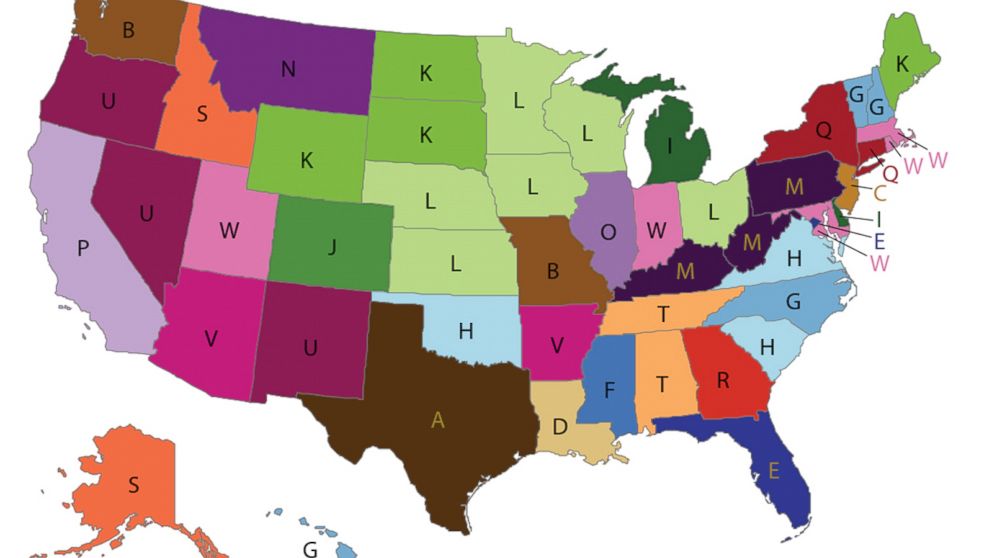Map Breaks Down Most Distinctive Causes of Death for Each State
From syphilis to black lung, map explains causes of death in each state.

— -- A new map has revealed the most distinctive causes of death for each state, from black lung in coal-heavy states to influenza in a few cold-weather states.
The map was created by looking at the causes of death for each state, calculating the rate of death per capita, and then comparing them against national rates. The findings were published Thursday in the journal Preventing Chronic Disease, Public Health Research, Practice and Policy.
Francis Boscoe, a research scientist at the New York State Health Department and lead author of the study, told ABC News that they looked for outliers in each state to determine the most distinctive cause of death.
"In Alaska, the number of deaths due to accidents by boat or plane is 41 per million but in rest of country it’s six [deaths] per million so it’s seven times higher," said Boscoe, explaining one notable outlier.
Other unusual outliers include higher rates of tuberculosis deaths in Texas and HIV-related deaths in Florida. Three states -- New Mexico, Nevada and Oregon -- reported having higher than the national average death rates related to "legal intervention," meaning a death caused by police and other persons with legal authority to use deadly force. This can include the death of the officer or a bystander.
Boscoe said he came up with the idea for the map in part to start a conversation about causes of death that may not get as much attention as more common causes of death, such as cancer or heart disease.
"Mashing them together on the same map is a colorful way to do that," he said. "The map does ... provoke this conversation."
Alicia McDonald, a researcher of epidemiology at the Department of Occupational Medicine at the North-Shore-LIJ Health System, said this kind of map can provide clear information about where public health departments can devote their resources.
McDonald, who is not involved in the study, said by having this information state health departments can potentially design prevention programs or create programs to identify individuals, who have that particular disease.
McDonald said she was especially surprised by deaths linked to treatable diseases such as syphilis that can be treated with antibiotics, or HIV, which can usually be managed by anti-retro-viral therapies.
"Wait a minute, what’s going on in this population?,” McDonald said of the questions the study can raise about these distinct causes of death. "You start to question, 'Are there interventions in place where you can prevent [this?]'"
McDonald said she was also alarmed by the higher rates of fatal tuberculosis cases in Texas and deaths related to nutritional deficiencies that were found in Vermont, New Hampshire and North Carolina.
"That’s surprising [because] that’s a developing country leading cause of death," McDonald said of both TB and nutritional deficiency. "To see [TB deaths] in Texas in the U.S. is somewhat surprising."
McDonald said she hopes researchers will dig further into the data to find out which populations are most at risk for these diseases and if they fell into certain patterns along age-related, sociological or racial lines.
She said the map "is very useful to all of us as health professionals" to see causes of death that "we may not think are issues in our particular state."
"This allows us to further investigate to see how the disease conditions are affecting" local residents, said McDonald.